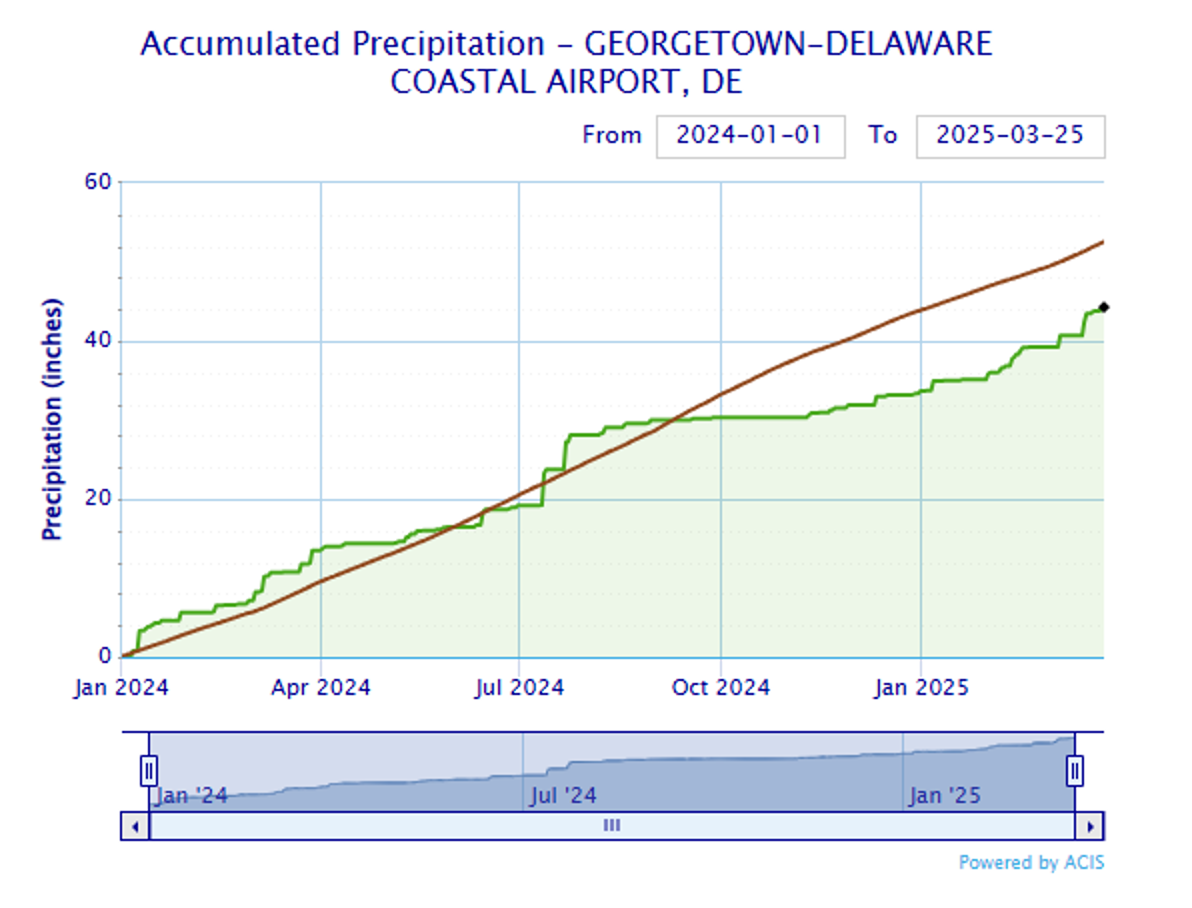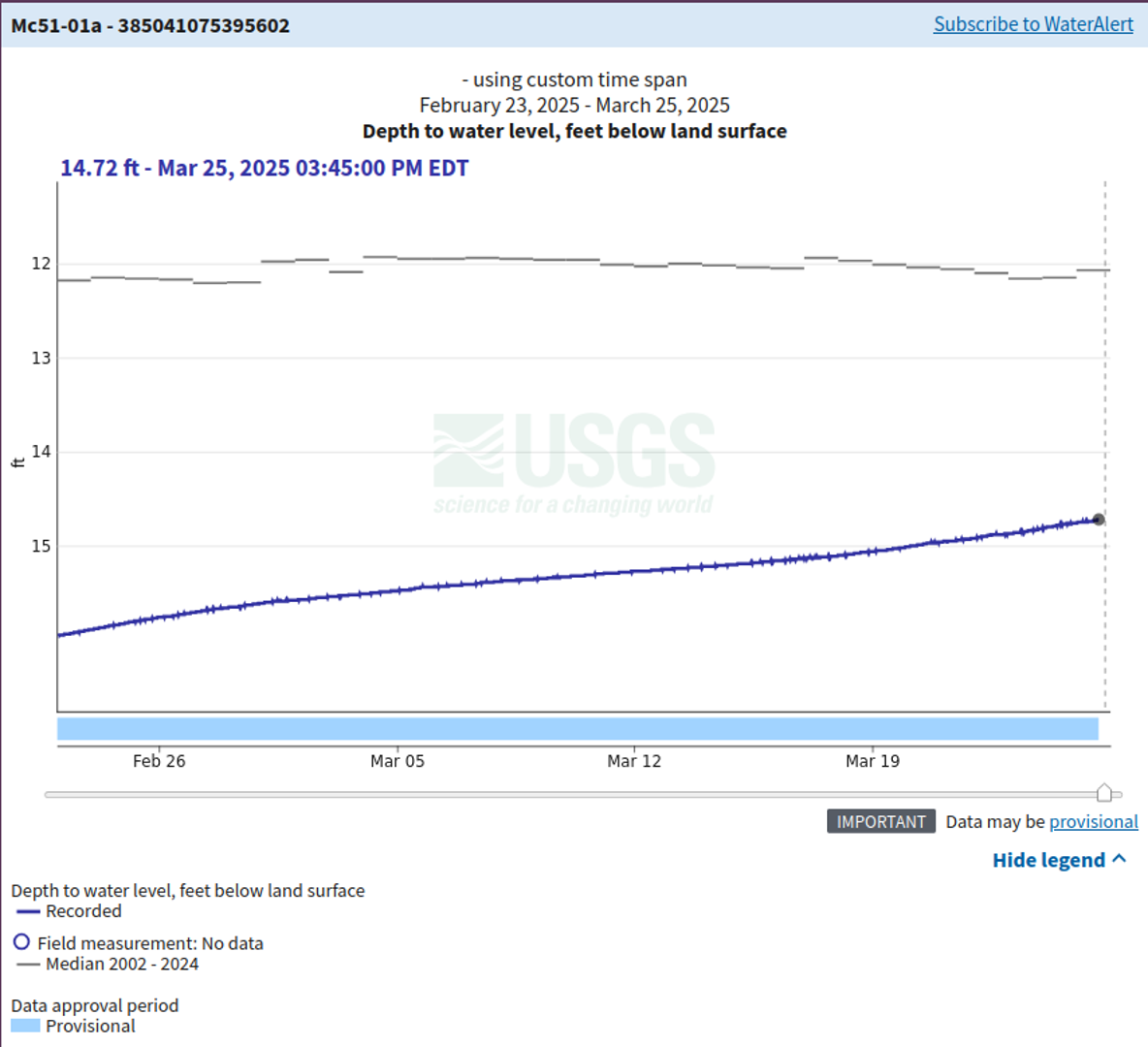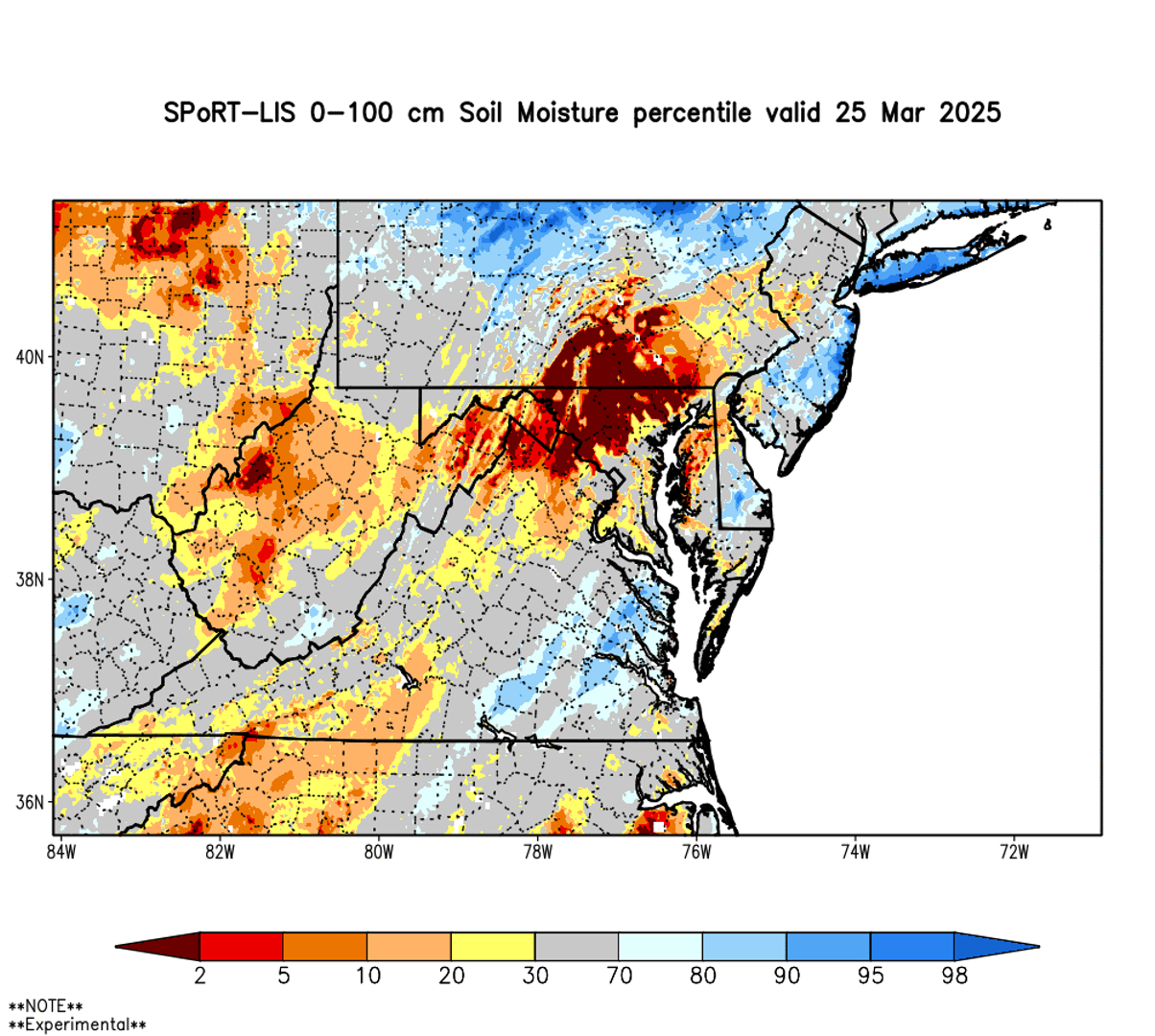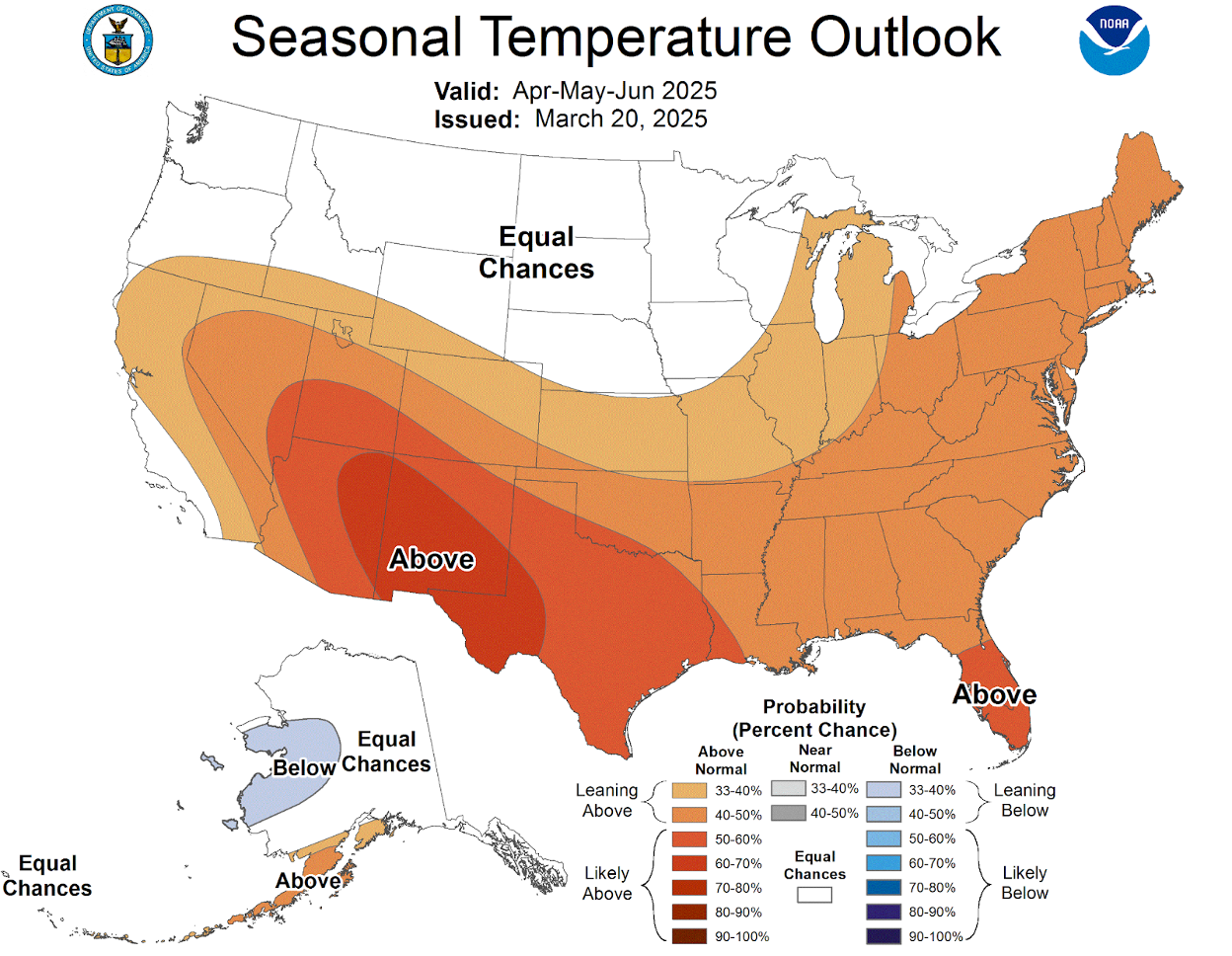Highlights:
- March precipitation is trending towards a second straight above normal month for the state as a whole.
- Stream conditions in northern Delaware are improving, but still well below where they should be this time of year.
- Groundwater conditions, which started recovering in early February, have continued to improve this week. Groundwater levels are still significantly below normal statewide.
- Soil moisture at or above normal for most of the state, with the main exception being in southern New Castle and northern Kent counties.
- Drought conditions should continue to make some improvement in the near term with more rain in the forecast, but with above normal temperatures forecast for the spring season, a complete recovery from the current drought may be slowed.
Statewide Drought Discussion
Precipitation over the last 30 days has been above normal from southern Kent County south, near normal from around Middletown to Camden, and below normal in the northern part of the state. Normal precipitation for March in Delaware is around 4 inches, depending on the location. Most of Kent and Sussex Counties are already above normal for the month, while New Castle County still has some ground to make up. This puts the state as a whole on track for its second straight month of above normal precipitation, which is certainly helping mitigate what was a below normal winter in terms of precipitation. Figure 1 shows how precipitation has tracked over the last 15 months in Georgetown.

While there has been some recent improvement, Georgetown and most of Sussex County is still around 7-8 inches below normal over that timeframe, with most of that deficit occurring in late 2024.
As of mid-day on Monday, the flow on White Clay Creek at Newark and the combined flow of the Red Clay Creek near Stanton and the White Clay Creek near Newark (combined flow at Veolia’s filter plant) held fairly steady when compared to last week. The flows on the Brandywine actually dropped by about 18 mgd since last Thursday (3/20) with the flow similar to what it was at the beginning of March (Table 1). Although the streams in New Castle County are doing well as far as not being in drought status, they are still flowing well below their respective medians for this time of year.

Chloride concentrations in the Christina River near Newport dropped a bit (from 79.2 ppm to 74.0 ppm); however, they remain well below the 250 ppm threshold. This location is the “canary in the coal mine” for chlorides. As chlorides approach 250 ppm at this location, we can anticipate that they will increase further upstream as well.
The water level in well Db24-18 (located just south of Newark) has increased to 15.2 ft below land surface (Table 1). It is slowly starting to recharge. The water level in this well typically ranges between 9.7 and 13.3 ft below land surface during March. Groundwater conditions are improving in Kent and Sussex Counties as well. USGS well Mc51-01a, which is located near Adamsville, shows that groundwater levels in that part of the state have increased nearly 1.2 feet over the last 30 days. This is certainly encouraging, but the water level is still about 2.7 feet lower than the median water level this time of year.

Soil moisture in the top meter of soil has improved substantially over the last month as a result of the above normal rainfall. Sussex County in particular is doing fairly well for this time of year, while soil moisture in portions of northern Kent and southern New Castle counties is still well below normal for this time of year (Figure 3).

Weather and Climate Outlook:
The precipitation totals in Delaware right now probably won’t change much between now and the end of the month. Precipitation amounts for the next week or so will be in the 0.25 to 0.50 inch range, as a couple of small weather systems move through the region. More precipitation may be in store for us when we get into April, as the northern jet stream is set to bring a couple of decent rain-producing systems through the eastern third of the nation. It will be important to monitor the temperatures as we get into the growing season and the natural vegetation starts to leaf out. With above normal temperatures expected this spring (Figure 4), evapotranspiration rates will be higher than normal. This means more precipitation could be needed to avoid deterioration in our drought conditions when we are already in a long-term precipitation deficit. The seasonal outlook for precipitation is less clear right now, with our region in “equal chances” of below and above normal precipitation.

